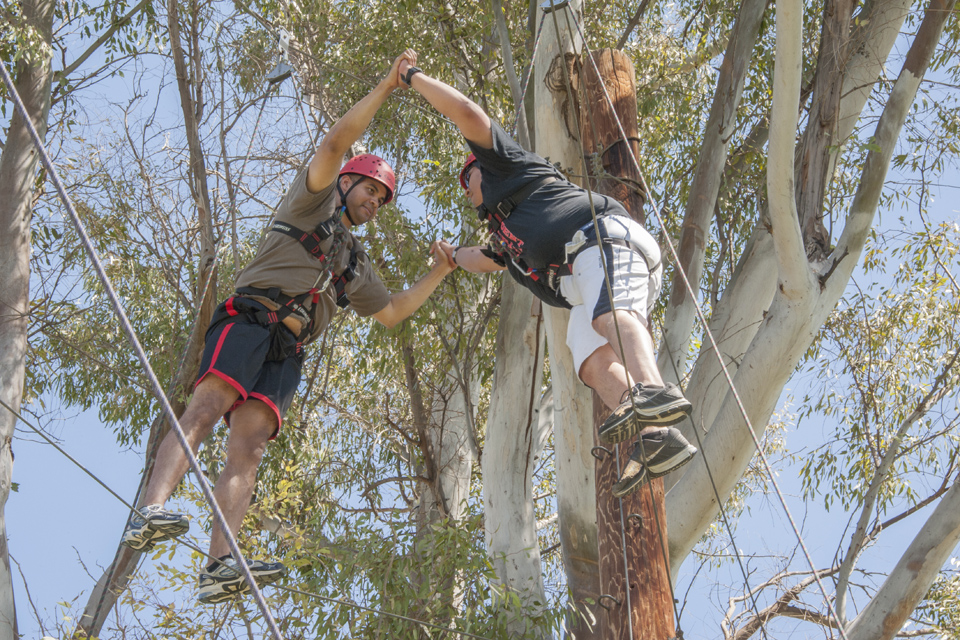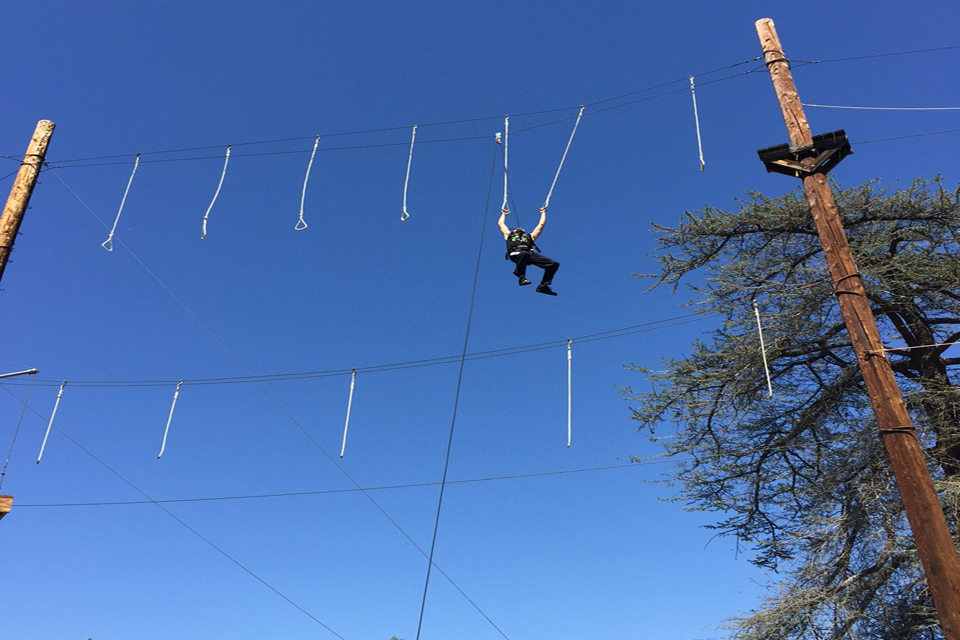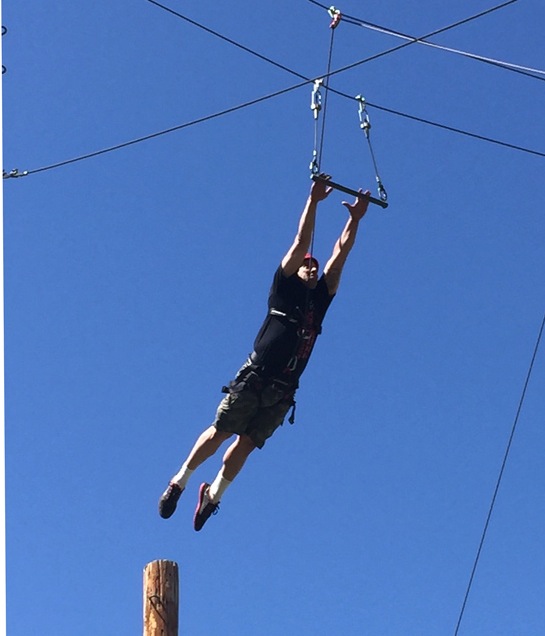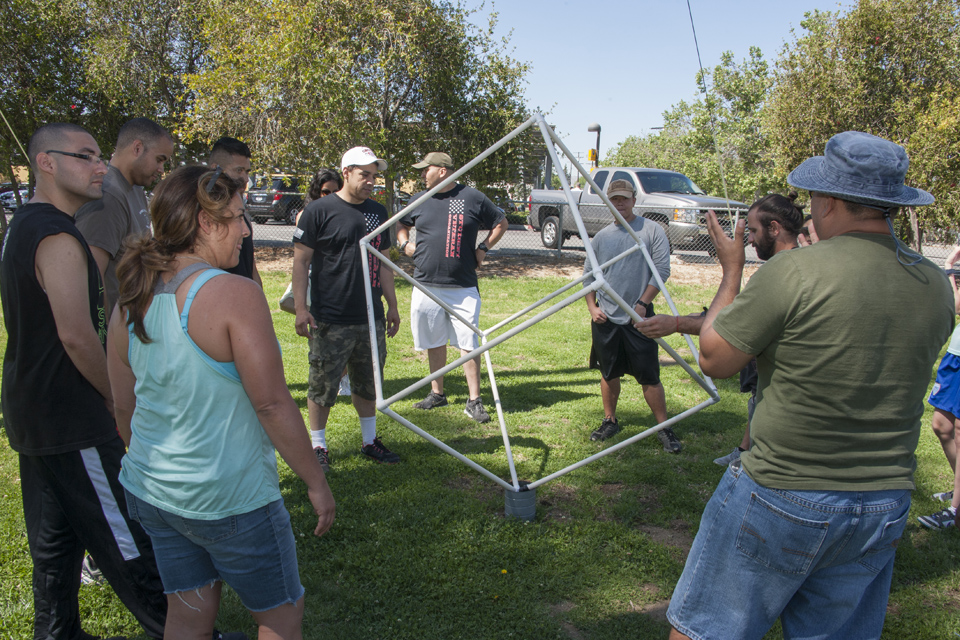Student Veterans Conquer the High Ropes Course
Reaching beyond one’s comfort zone, building trust, raising self confidence and so much more took place when student veterans participated in the High Ropes Challenge Course (HRCC) at California State University, Northridge. The Institute for Community Health and Wellbeing, Student Veteran Organization and Veterans Resource Center (VRC) provided activities, both on the ground and in the air, that helped form a bond within the group.
The event is significant to the student veterans because it is a team-building exercise as well as a self-learning experience. “The high ropes course is designed to be worked through as a team, therefore we will encourage and motivate each other to succeed,” said CSUN Student Veteran Organization President Art Garcia. “At the same time, the student veterans will accomplish tasks and overcome obstacles meant to challenge and empower the person. This type of activity is great for us to unwind and discover our strengths.”
The day’s activities began with a series of team-building exercises. The exercises helped the veterans discover their strengths, build friendships and communication skills. The participants must establish both teamwork and trust before they tackle the ropes course.
After the team-building exercises, the veterans completed three of the rope challenges, each testing their strength, endurance and trust in each other.The veterans are attached to safety harnesses in the hands of their comrades on the ground. The participants must trust that with any slip, their fellow veterans will be there to stop them from hitting the ground. Student Veteran Juan Lopez-Escobar said, “When you go to war, you need to have faith [because the consequences are greater] – you don’t just fall, you die. The consequences aren’t so dire on the course, but there are still consequences. It feels good that you have a good team so you can go out of your comfort zone.”
The veteran participants expressed how the challenging course helped them attain self-confidence, overcome fears and improve communication skills.
“Taking part in an event like this is greatly beneficial to one’s health,” said Garcia. “This is an exercise that challenges the mind, body and spirit. A participant can expect to walk away stronger both physically and mentally and also be more in tune with one’s self.”
For Christina Weyant, the Recreation and Tourism Management faculty member facilitating the HRCC, choosing to work with the VRC is a chance to give back to a community that served our country, providing them with a safe space to create a stronger sense of community and challenge themselves in different ways than they may be used to. “One of the greatest things about the HRCC is that it can provide room to grow for both groups and individuals that nothing else, in my experience, does in quite the same way,” Weyant said. “Also, it can often feel like play, and when we play and learn at the same time, magic can happen!”
Weyant believes that the HRCC is an underused asset for the CSUN campus and community that offers unique experiences designed to encourage group and individual development. The course motivates individuals with confidence and enthusiasm and teaches the participants lessons critical to personal and professional success.
“Although we strive to build community with a group, participants often say that they also take away with them a new sense of how to communicate effectively the idea that they can do more than they thought was possible, the notion that they are stronger as part of a group than alone or a combination of all three,” Weyant said.






 experience
experience